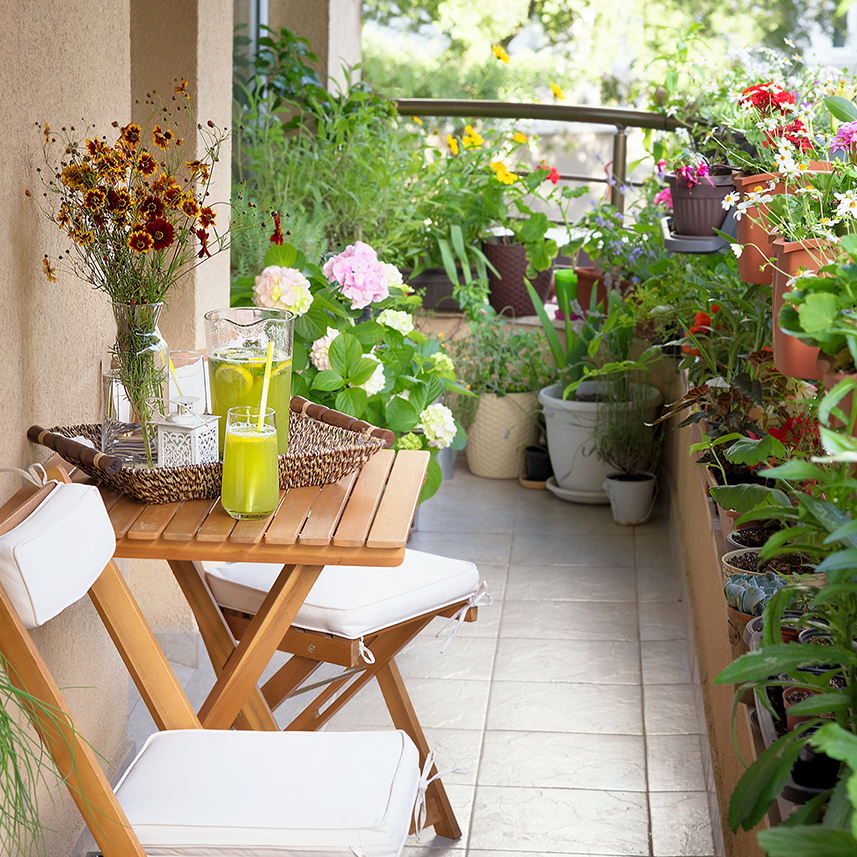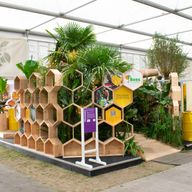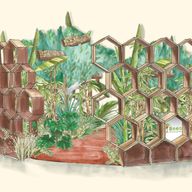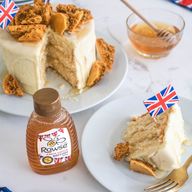
Flowers are a buzzing source of nutrition for honey bees and an important part of helping the hive thrive. Just ask the wonderous worker bee – a fabulous and faithful female whose mission-critical job it is to forage for nectar and produce honey. These hardworking heroes travel far and wide in search of delicious pollen, typically visiting around 7,000 flowers a day!
Life wouldn’t be so sweet without our pollinating pals, and that’s why we need to look after them as they do us. At Rowse, we’re passionate about saving the bee-loved honey bee through our Hives for Lives programme of vital initiatives. And you can help too!
In a recent study, gardens in urban areas took top spot, producing the most nectar per unit area for our buzzing buddies. But did you know that simply planting a few bee-friendly flowers in a window ledge container or hanging basket can help keep our buzzing buddies happy and healthy?
That’s right – you don’t need acres of green lawn to create a bee-autiful rainbow garden fit for buzzing worker bees. All you need is some imagination and your favourite gardening gloves…
Sprucing up your small space
If you live in an apartment or house without a garden, don’t worry, you can still help to feed the bees with bee-autiful blooms. Any outdoor space, no matter the size, can be transformed into a foraging wonderland for pollinating insects. Here are a few ideas…
For those of you lucky enough to have your own balcony, potted plants will be your best bud. From long thin border planters to frame your space, to a collection of large round pots, there are lots of different options to make the most of your little slice of bee paradise. There are plenty of pretty plants that are happy-as-larry in pots and a great source of nutrition to bees, like cosmos and lavender.
If your balcony is a bit of a tight squeeze, make the most of the walls around you instead of making a maze of your floor space. A vertical garden or trellis will bring a burst of greenery to your outdoor area, allowing you to maximise the use of your space. Just imagine sitting outside on a warm summers’ day with an ice-cold drink, surrounded by all that colour and the low hum of happy bees!
Without a garden or balcony to dig your green fingers into, it can be tricky to visualise what your area might look like with a little more colour. If you’ve got no floor space to play with, take it from the window to the wall! Window boxes and hanging baskets will help you to curate curb appeal while also providing our miniature heroes with swarms of nutrients!
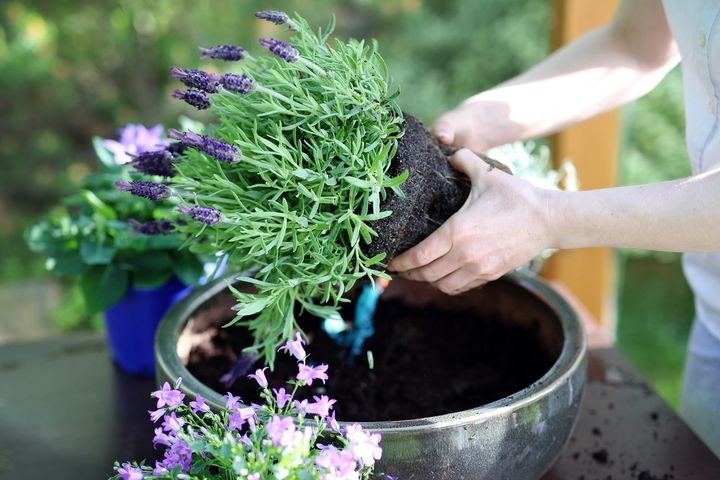
Bees’ favourite blooms for small spaces
Every space has potential, and a mini makeover will help to brighten up the place while giving bees the food they really need! If your green fingers are at the ready, here are some of our buzzing buddies’ favourite flowers to transform your small spaces…
Lavender
Many of us are familiar with the soothing scent of lovely lavender, whether it be from your favourite candle or a relaxing bubble bath, but this vibrant bloom is great un-harvested too. Pollinators will make a beeline for lavender thanks to its pretty purple hues and high nectar content. Adding a pop of colour to your outdoor space, lavender is perfectly placed in pots and planters.
Catmint
Don’t let the name fool you – catmint is wildly popular with our pollinating pals, and less so with furry felines. If you like the purple hues of lavender, then catmint is another plant that would look perfect in your small space. It also blooms for a long time throughout the year, keeping bees busy during their active months.
Valley Valentines
Shady spaces aren’t a no-go for beautiful blooms. In fact, Valley Valentines are best popped in a pot in a shady spot. The gorgeous bell-shaped flowers are a popping pink colour and offer something a little different to your small outdoor space – buzzing bees will be thankful to share your Valentines this year.
Sunflowers
Could you ever look at a sunflower and not think happy thoughts? If you’ve got a tall but narrow space to fill, sweet sunflowers will surely brighten up your day. They’re really easy to grow – a fun activity for children to get involved in – and even come in dwarf sizes to squeeze into nooks and crannies. Not only are sunflowers a yummy source of nectar for bees, but they can also attract other wildlife like birds and insects.
Chives
If you’re already small-space savvy, you’ll be an expert in multi-purpose features. Planting an herb garden provides a practical use while adding a little greenery to your set-up! Plus, planting chives provides delicious nectar for our pollinating pals too, as they sprout flowers that bees know and love.
Cosmos
If you used to draw flowers in school, they’ll probably have borne a resemblance to cosmos. These simple but beautiful blooms are oh-so-delicate and incredibly pretty in pots, with an open flower giving easy access to nectar for bees. They come in plenty of colours, and can also be cut and displayed in a vase in to add a pop of colour to your living space!
Wildflowers
Wonderful wildflowers don’t just grow in fields and grass verges – they’re perfectly happy sitting in a pot, too! Planting wildflower seeds will bring natural wonder to your outdoor space, no matter how big, and they really are the blooms that bees love best.
A bee-autiful display of blossoms will brighten up your day, and help feed our buzzing friends at the same time – it really is a win-win. These examples are just a few of our favourites to get your green fingers going – we guarantee you’ll be buzzing back for more once you’ve got the gardening bug.
